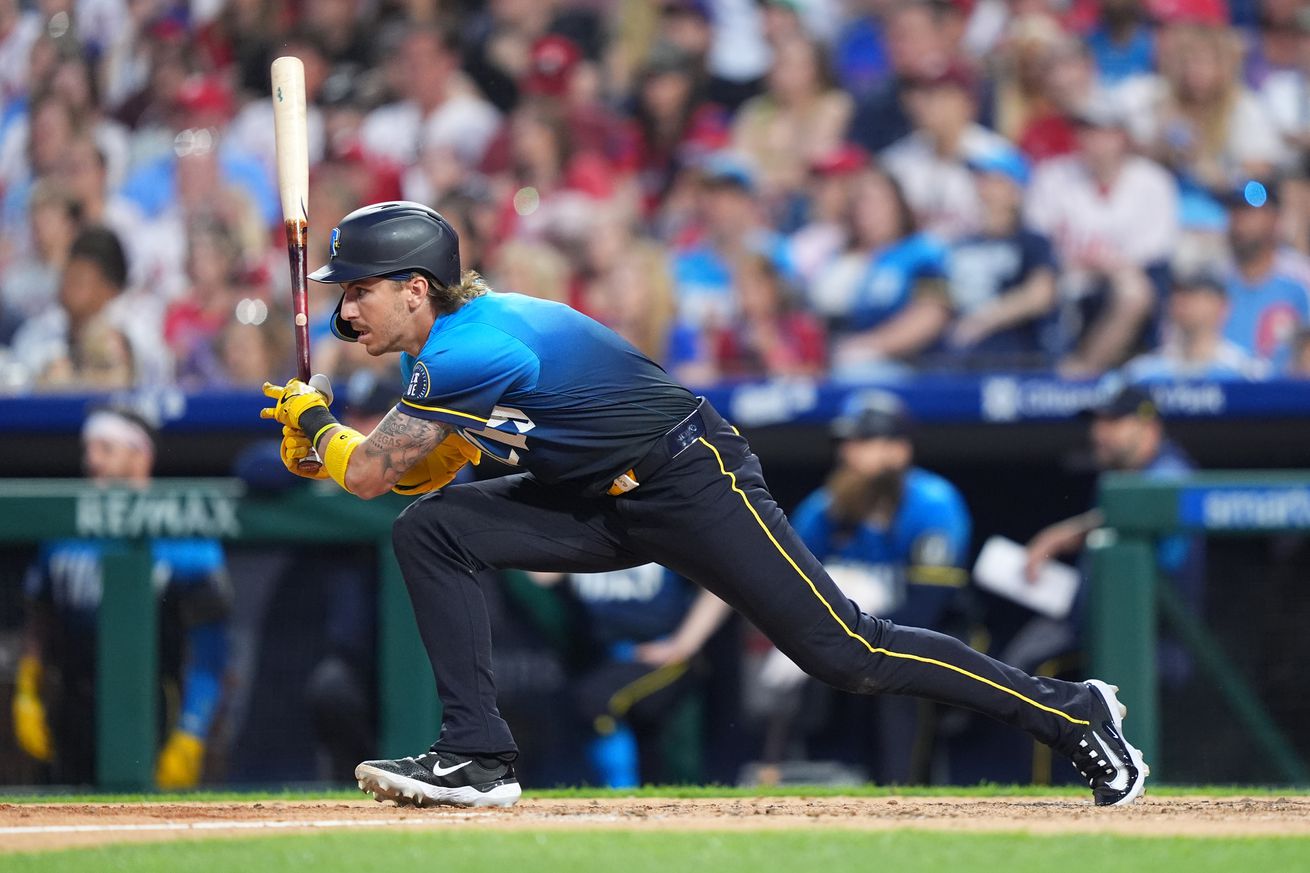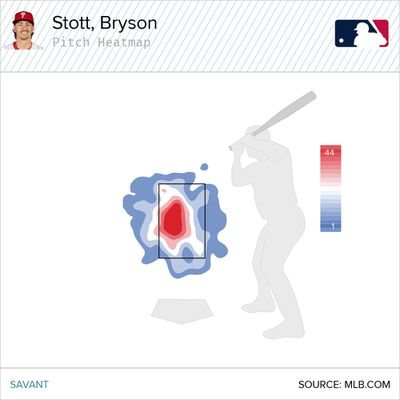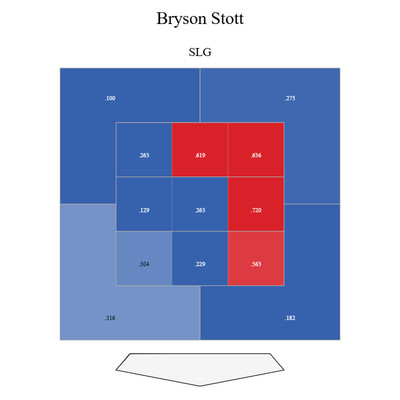
The answer might surprise you!
When I was in Little League, we had a mandate from our coach.
“Take until you get a strike!”
The consequences were swift and medieval. Running for an entire practice was the simple way of getting it through the heads of nine, ten, eleven, and twelve-year-old kids that swinging at the first pitch was bad. So, for the four years I was in Little League, I never once swung at the first pitch, no matter where that pitch was located. It being Little League, the chances of it being a strike anyway were quite low, so the coach had something of a point.
In Major League Baseball, pitchers, for the most part, can throw a strike whenever they desire. It might require them to take a little something off the pitch, but generally, the ability to throw a strike on a first pitch is something they can do with ease.
Which brings us to Bryson Stott.
The narrative building around Stott is that he can be a little too passive at the plate. How often have you been frustrated at Stott because he needs to swing? Too often, he lets hittable pitches go by and gets himself into situations where he is unable to drive the baseball, forced into a contact to survive approach at the plate. He’s never been known as a power hitter, but even the power that he has cannot be accessed when he’s always behind in the count.
However, there are some facts that I wanted to explore. Ultimately, I wanted to know if he should be swinging more often. If he’s letting too many of those pitches that he can do damage with go by. So, let’s establish some facts here.
Fact: Bryson Stott sees 4.49 pitches per plate appearance, tops in baseball
This is a good thing. Not only for the batter at the plate, but for those behind him, seeing as many pitches as possible not only allows you to (potentially) see a pitcher’s full repertoire right away, it gives the team information on how a particular pitch is moving that evening. Maybe how one pitch looks more hittable than others.
This kind of information can vary from batter to batter, but it’s always good to go to the plate armed with as much data as possible, particularly with the proliferation of video allowed in the dugout now. If Stott is seeing a lot of pitches, that information can be transferred right away to his teammates. It’s a valuable skill to see a lot of pitches.
It can also be a valuable thing to swing early sometimes to let the opposition know that they cannot simply throw a pitch down the middle and it’ll be taken each time. However…
Fact: Bryson Stott swings at the first pitch 12.0% of the time, dead last among all qualified hitters in baseball
Patience is a virtue, or at least that’s what my grandmother told me. It’s alright to be patient at the plate when hitting, but there is an issue when patience turns into passivity and then we have a problem. Swinging at the first pitch 12% of the time is fine if the pitch is a ball more often than strike, so it’s worth paying attention to how often pitchers are throwing strikes to him. The basic bit of advice when hitting is that if one is going to swing at a first pitch, it had better be one that the hitter can do damage with. Here is a heatmap of first pitches to Stott in 2025:

Those aren’t exactly the places where you can do a ton of damage on a pitch. Stott in particular doesn’t do well on those types of pitches anyway.

So, yeah, if Stott isn’t going to get a pitch to hit right away on the first pitch, might as well not even swing at it. It’s not like he’s putting himself in a hole, right? Plus, swinging at the first pitch every now and then allows for some success.
Bryson Stott wallops a 3-run homer pic.twitter.com/ha4tEg8OBo
— MLB (@MLB) June 18, 2025
Fact: Bryson Stott hits better when he gets behind in the count after the first pitch
This maybe doesn’t seem like a fact at all, but there are some numbers to pay attention to here.
After 1-0: 116 PA, .206/.306/.237, 45 sOPS+
After 0-1: 159 PA, .240/.277/.367, 114 sOPS+
First pitch swing: 16 PA, .467/.467/.800, 172 sOPS+
Stott actually hits somewhat better if the first pitch is a strike and he goes down in the count. The first pitch swinging numbers are impressive, but are riddled with small sample size disclaimers. It’s actually somewhat counterintuitive to what I believed when first researching for this, but the numbers are kind of true.
Does that mean that he should always swing at the first pitch? Of course not. That’s silly.
I’d argue that this doesn’t really mean much of anything, which is odd because we’re trying to answer the question in the title. Should Bryson Stott be swinging more often? The answer is: I don’t know. The most basic thing is that maybe Stott isn’t as good a hitter as we were hoping he’d turn out to be.
He currently has an 84 wRC+. Barring a major change this season, it would be the third out of four seasons in which his wRC+ did not crest 90 (tops was 2023….at 101). He’s a below average hitter and an above average fielder. That’s a useful player for a team like the Phillies, who rely on other star hitters to produce in order to score runs. So asking Stott to completely change his offensive profile by swinging earlier and/or more often may not be the best course of action. It wouldn’t hurt to get a few more swings at strikes early in the count, but otherwise it’s probably best to just let him be.